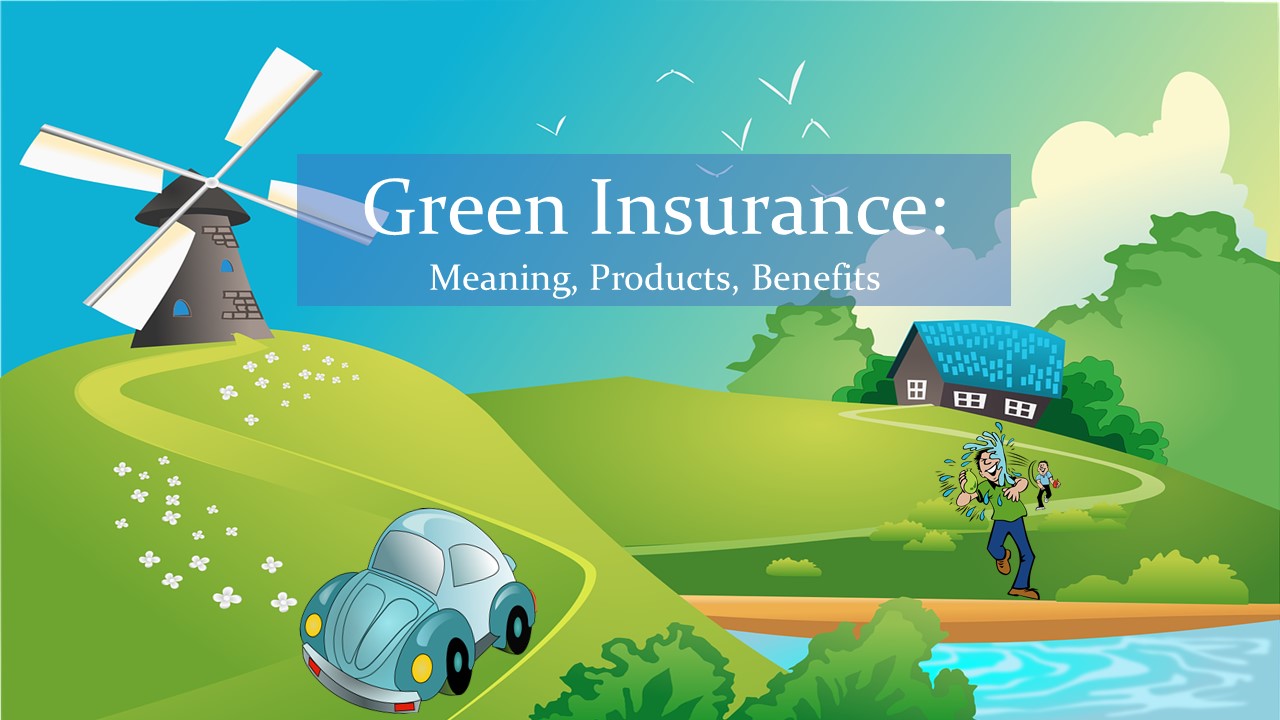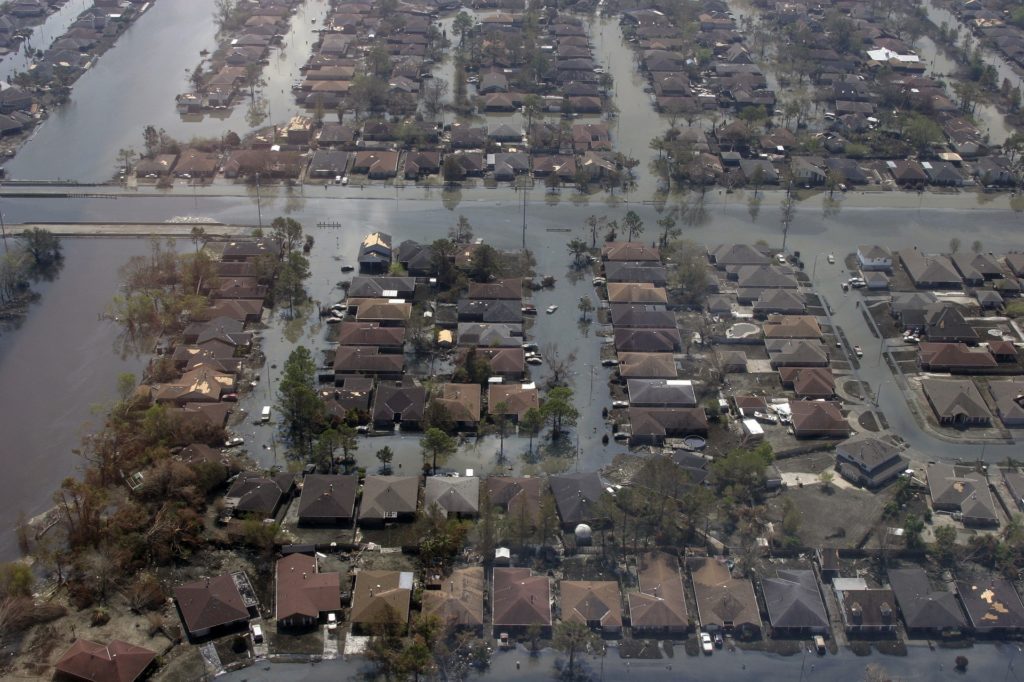Green insurance: Meaning, Products, Benefits

Green insurance is a type of insurance that helps to protect the environment and combat climate change. Also known as eco-friendly insurance, it is basically an economic incentive to encourage behavioural change. As more and more people understand their impacts on the environment, they are opting for eco-friendly practices. As a result, insurance companies are creating innovative products and services to encourage sustainable practices and technologies.
Climate change and insurance industries
That the global climate is actively changing is now a reality. According to reports of the IPCC, humans contribute majorly to it through their greenhouse gas emissions. Various activities like driving vehicles and running industries depend heavily on burning fossil fuels. During these processes, they release harmful gases like carbon dioxide that affect the climate system.
Weather-related catastrophes
Fundamentally, insurers cover most risks and help people recover from their losses. As the climate worsens, such weather-related risks (e.g. floods, cyclones) are increasing alarmingly. In 2020 only, weather-related catastrophes caused a global economic loss of US $ 258 billion.
Thus, insurers all around the world recognize climate change as a major threat to the industry. With more damages related to unstable weather conditions, they also have to pay out more.

Climate change as a business opportunity
Yet, at the same time, they also realize that climate change can be a good business opportunity for them. On the one hand, they can promote eco-friendly practices by diversifying their products, hence ‘green solutions’. On the other hand, they also help to combat climate change thus safeguarding their businesses.
Green insurance products
Hence, green insurance products are emerging rapidly around the world from agricultural solutions to home rebuilding.
Basically, green insurance products are investment practices that are sustainable and decrease risks.
Sustainable here means having economic, environmental and social benefits.
These green products are rooted in innovative solutions that increase performance throughout their life-cycles. Right now, a plethora of green insurance products exists to promote sustainable practices and increase our resilience to disasters. In general, underwritings and investment practices vary from country to country and business to business. But for the sake of categorization, we can classify green insurance products into:
1. Renewable energy insurance
Investing in renewable energies such as solar energy and wind power is now critical to combat climate change. Yet, these technologies are often very expensive with high risks. Consequently, insurers offer renewable energy insurance policies to technological firms and individuals to promote their development and lower risks.
For example, insurers may cover construction and engineering risks throughout the project development phase. Others may also offer loss of revenue and business interruption support.
Also, homeowners who use renewable energies at home are also eligible for interesting packages. For instance, they can use conventional electricity free of charge during power outages.
2. Green building insurance
When it comes to green buildings, green authorities must certify them as ‘green’ based on certain environmental standards. Green authorities include bodies like Green Globe, LEED (Leadership in Energy and Environmental Design) and Energy Star. Generally, people construct ‘green’ buildings with non-toxic materials and in a way that conserves energy and water. For example, they can have rainwater harvesting systems or radiant ceilings.
Here, firstly, insurers can help clients to design their green buildings (homes) right from scratch to be more sustainable and diminish risks. Secondly, green building insurance covers the materials and technologies that green building owners have.
And thirdly, some insurers also offer green rebuild insurance that encourages people to use eco-friendly materials after a covered loss. Those who already have green building insurance can even get discounts on their premiums.
3. Green car insurance
As for green car insurance, various sustainable policies exist.
As it currently stands, the transportation sector is the largest emitter of greenhouse gases. Vehicles that use traditional fossil fuels like diesel and gasoline heavily contribute to global warming and pollution. In fact, a typical vehicle passenger releases around 404 g of carbon dioxide for every mile.
Hybrid, electric, energy efficient car insurance
As a result, insurers offer discounts for vehicles that are eco-friendly. Such policies can cover hybrid and electric vehicles or those that are energy efficient. These insurances also apply to farmer vehicles and boats.
Pay as You Drive (PAYD) programs
Additionally, some insurers may propose the Pay as You Drive (PAYD) programs. The underlying principle of the PAYD is the lesser people drive, the less are accident risks and the lower is pollution. So, a sensor is installed in the vehicle to track the miles driven. As drivers travel less, they receive discounts from their insurers.
4. Green agriculture insurance
As the global population increases and consumption patterns change, investing in agriculture is primordial. While people are opting for higher-value agricultural products, climate change increases the risks of such investments.
Green agriculture insurance, therefore, helps to manage climate risks by offering more flexible solutions. For example, farmers can benefit from subsidies for technologies that emit fewer greenhouse gases. Or, beneficiaries receive cash when weather (e.g. rainfall) patterns change rather than over total crop failure. In this way, green insurance coverage enhances the capacity of farmers and investors to be sustainable and resilient.
5. Environmental liability insurance (ELI)
In recent years, the amount of environmental damage has been growing rapidly. Consequently, it led to the formulation of the Environmental Liability Insurance or commonly called ‘green insurance’ for polluters.
The ELI is basically a mechanism that covers the costs of restoring polluted regions and biodiversity. People who are accidentally or purposefully affected also receive some sort of compensation. ELI plays an important role in regulating pollution and consequently protecting the environment.
Marine environment liability insurance
The wreck of the Wakashio vessel off the south-east coast of Mauritius in August 2020 illustrates this. It released more than 1000 tons of oil into the sea affecting sensitive marine and coastal biodiversity and community livelihoods. Under the BUNKER convention for bunker oil pollution, the owners of the ship are responsible to pay for the damage caused by the oil leak.

Additionally, according to the Convention on Limitation of Liability for Maritime Claims, the owners themselves must have adequate insurance coverage. Thus, upon mutual agreement, the insurance company pays out the amount of damage that is estimated.
Benefits of green insurance products
Green insurance products are important because they:
- Are green solutions to combat climate change,
- Help to foster risky technological advancement,
- Prevent loss and
- Encourage risk-reducing behaviour in clients
1. Green solutions to combat climate change
Insurance companies are fundamental players in financial markets that collect large amounts of savings. With the globalization of financial markets, their role as financial intermediaries has increased significantly. Just like other big investors, they also perceive climate change as a boon.
However, climate change itself is highly risky. As people invest in sustainable gadgets like wind turbines, they need to secure these new products. Conversely, insurers have the expertise to deal with such risks. As a result, their policies promote the use of sustainable technologies and products.
2. Foster risky technological advancement
Insurers usually cover small-scale to large-scale projects at various levels. As an example, one of the most pressing issues today is energy: production and consumption. While solar energy is one of the most abundant energy source, the technology to harness it is quite expensive.
In spite of such risks, insurers foster such technological advancement.
3. Loss prevention
Most certainly, loss prevention is at the heart of the insurance industry. But climate change poses significant risks and losses to the industry. For this reason, insurers engage in financing the green projects of customers to increase their resilience.
To cite an example, building houses on stilts in flood-prone areas decrease damage loss during a flood event. Insurers may either support sustainable incentives that decrease damage loss in the long run. Or they may advocate for better land use planning and discourage development in risky regions.
4. Encourage risk-reducing behavior in clients
As far as insurers are concerned, customers who showcase green behaviours also present fewer risks. For example, drivers who drive hybrid/electric cars often do so to decrease their carbon emissions. For insurers, these people represent ‘good risks’ and they consequently reward them with lower premiums.
Green insurance: different policies
All in all, green insurance products encourage people to be more eco-friendly. Nonetheless, some insurers may be greener than others and advisory products may differ.
According to certain green insurance policies, insurers can donate to humanitarian works for a safer environment. Other green insurers may engage in tree planting and reforestation projects. Others still may repair any damaged property to decrease the amount of waste.
Understanding risk for better policies
In general, the insurance industry helps society to understand risks thus securing its future. As it is, climate change is no exception. Insurers are actively engaging in catastrophe modelling and partnering with scientific bodies to track trends. In this way, they can present policy analyses on the benefits of reducing greenhouse gases or adapt to climate change.

Pingback: Effects of wildfires: Positive, Negative, Examples - Yo Nature